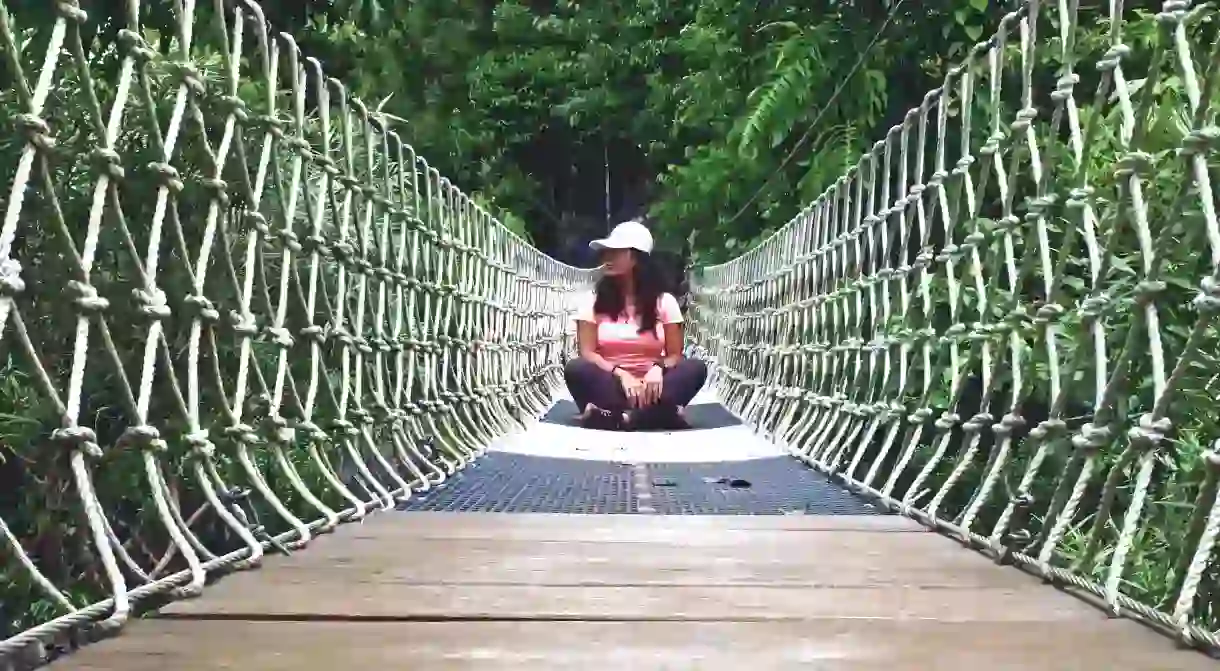21 Essential Phrases You'll Need in The Philippines

When visiting the Philippines, foreign tourists should consider themselves lucky. That’s because they’re easily understood by local folks, and locals try as much as possible to make foreigners feel welcome. Read these essential Filipino phrases that may come in handy during a friendly visit to the country.
Preparing for your trip to the Philippines? Ensure you immerse yourself in the local culture and traditions by joining a friendly guide on one of these tours and experiences in the Philippines.
Greetings and Essentials
Magandang araw! (ma-gan-dang a-rau) / Good day!
Even though the weather is usually hot in the Philippines, it always seems like a great day to greet people. Should you want a more time appropriate phrase, greet every Filipino with “Magandang hapon!” in the afternoon, or if it’s early in the morning, say “Magandang umaga!”
Mano po (ma-no po) / Bless
In some cases, you’ll notice that younger people ask for the elderly’s hand and gently press their foreheads towards the elder’s hand while the elder utters this phrase. This is a sign of respect and a way to accept the blessing from elder people.
Oo / Hindi (o-o / hin-di) / Yes / No
To affirm or agree, say “Oo,” and when you disagree, it’s definitely a “No” or “Hindi.”
Salamat (sa-la-mat) / Thank you
Filipinos are known for their warm hospitality and acts of kindness. Feel free to compliment them by saying this phrase.
Walang anuman (wa-lang a-noo-man) / You’re welcome
If people thank you for your gesture or act towards them, they’ll recognize your effort and say “salamat.” In return, tell them “walang anuman.”
Paalam (pa-a-lam) / Goodbye
Whenever you or someone else is leaving a place or after letting them know that you’re heading home, you can bid farewell by saying this phrase.
Directions

Nawawala ako (na-wa-wa-la a-ko) / I’m lost
To let someone know that you’re looking for directions, let them know that you’re lost by saying this phrase and expect that you’ll get help (and clear directions) in an instant.
Hinahanap ko (hi-na-ha-nap ko) / I’m looking for
Then, tell them politely where you’re headed to, or the person you’re looking for. Simply attach the name of a person or place after the phrase: “hinahanap ko ang” hotel or “hinahanap ko si” Ana.
Nasaan ang CR? (na-sa-an ang C-R) / Where’s the Comfort Room?
In the Philippines, it’s uncommon to say restroom, toilet, or bathroom; rather, they call it a CR or comfort room. So, use this phrase the next time you can’t find the restroom within a mall, restaurant, or any business establishment.
Kaliwa/Kanan (ka-lee-wa / ka-nan) / Turn Left / Turn Right
Consider yourself lucky if you find a local who’s very familiar with the place you’re heading to. However, if you think you’re more knowledgeable about it, learn to give proper directions so you’ll reach your destination quickly.
At the Restaurant / Bar
Ang sarap (ang sa-rap) / It’s delicious
You’ll find yourself getting a taste of a variety of meals and local delicacies during your visit to the Philippines. To let them know how satisfied you are with the Filipino dish and how much you appreciate the chef or cook’s specialty, simply say “ang sarap.”
Pahinging tubig (pa-hee-nging too-big) / May I have water?
Luckily, restaurants usually serve water for free, and you just have to request it.
At the Market

Magkano? (mag-ka-no) / How much?
Some Filipinos take advantage of foreigners by selling them items or services at a higher rate. Be sure to ask the exact amount you’re paying for, and count the change given to you before you leave.
Numbers:
Isa (i-sa) / 1
Dalawa (da-la-wa) / 2
Tatlo (tat-lo) / 3
Apat (a-pat) /4
Lima (lee-ma) / 5
Anim (a-neem) / 6
Pito (pee-toh) / 7
Walo (wa-lo) / 8
Siyam (see-yam) / 9
Sampu (sam-poo) / 10
Tawad (ta-wad) / Last price?
Filipinos usually haggle or negotiate the price of goods when they think it’s too expensive or when they’ve bought a significant amount and ask for a discount. Feel free to try this at the market, and see how the vendors will bring down the price.
Ano iyan? (a-no e-yan) / What’s that?
To directly ask about the product or goods they’re selling, you can say the following: “Ano iyan?” Expect an elaborate response; vendors will describe the product and where or how you can use it.
Making Friends
Kumusta? (ku-moos-ta) / How are you doing?
As your introduction or starting line to get to know people, start asking how they are doing/feeling at the moment. Say “kumusta?” This phrase was borrowed from the Spanish words “como estas?” which has the same meaning.
Ano ang pangalan mo? (a-no ang pa-nga-lan mo) / What’s your name?
As part of the introduction stage or when getting to know someone, use this phrase to ask for their name.
For Everything Else…
Para po (pa-ra po) / Stop here
If you ever get to ride on any means of public transportation such as a jeepney or cab and you decide to get off, just say ‘’para po’’ so the driver will stop the vehicle to drop you off safely.
Bayad po (ba-yad po) / Payment
To pay for goods, services, or your transport fare, you hand over the payment and say “bayad po.”
Paumanhin (pa-ooo-man-hin) / Excuse or Sorry
If you feel you’ve unintentionally offended someone or accidentally bumped into another person, you can simply say this phrase to ask for forgiveness or understanding.
Ingat (e-ngat) / Take care
After saying “paalam” or goodbye, you can add this phrase to emphasize your concern or to wish them well.













